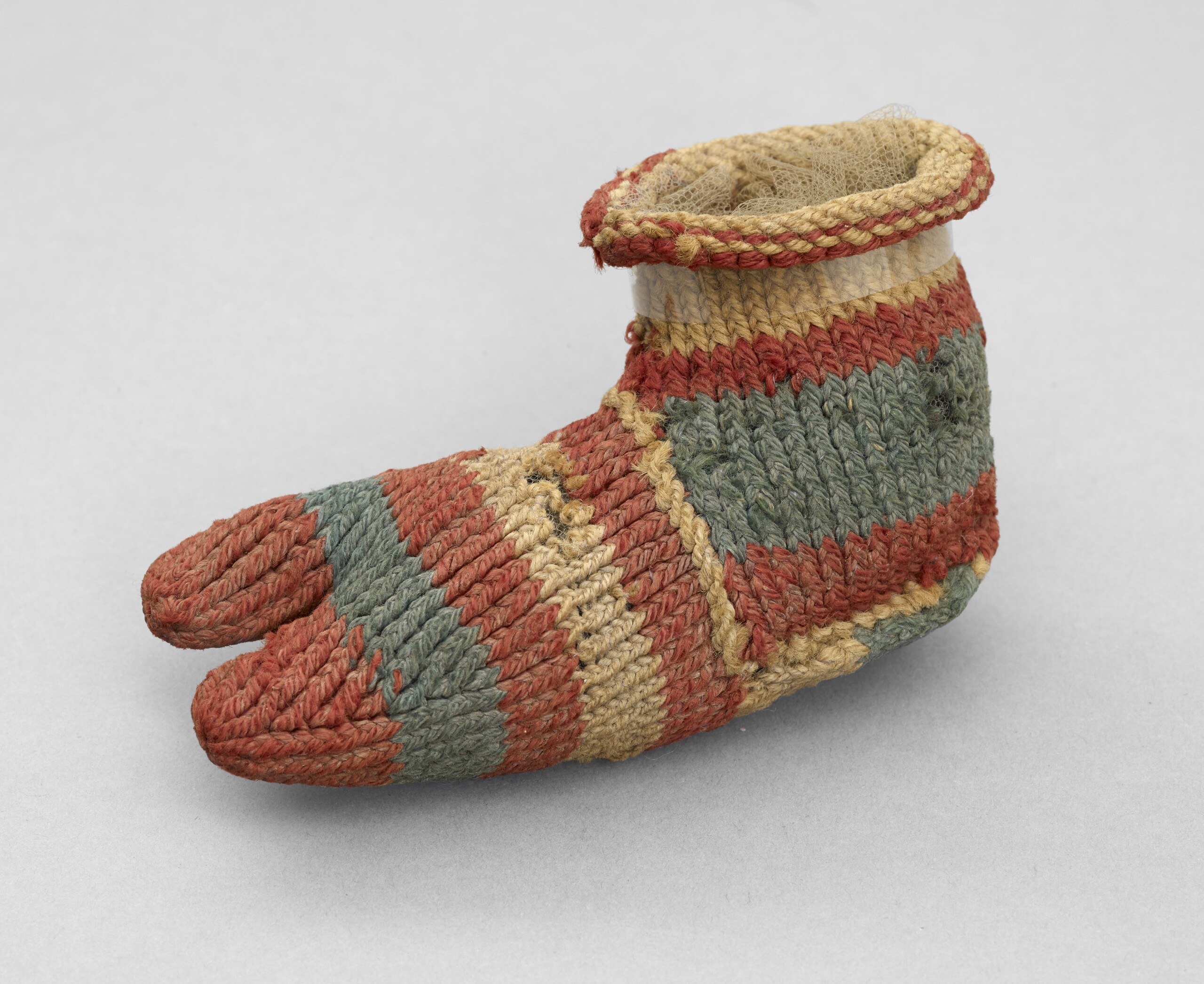
in Deutsch / German translated by Elena Luisa
This object has been translated into 4 different languages by 4 different users
Diese bunte, 1 700 Jahre alte Socke mit gespaltenen Zehen wurde ursprünglich von einem britischen Archäologen in einem römischen Friedhof in Oxyrhynchus (dem heutigen Al-Bahnasa in Ägypten) gefunden. Sie wurde aus feiner, dreilagiger Wolle im sogenannten „Sprang“-Strickverfahren hergestellt. Aufgrund des trockenen Klimas in Ägypten blieb sie lange Zeit erhalten.
Können Sie uns ein Foto oder eine Zeichnung Ihrer buntesten Socken zeigen?
Do you have something you’d like to say, in your own language or English, about the object or translation? We’d like to hear what you think.
Translations are community-sourced and for anyone to participate in, however you use your language. For more information, see Community Guidelines.
20 Feb, 2025
There is a nice wee video at Manchester museum imagining the history of this sock. Unfortunately the cartoon shows a woman knitting it in two knitting needles, which was clearly not the case. Such a shame!
30 Nov, 2024
This is so cool! Love discovering new examples of Nalbinding. This is definitely Coptic Stitch Nalbinding for sure. I’m a Nalbinding Specialist and I’ve just recently reconstructed some of these. Love the different colours on this example, you can even see the joins and imperfections made by the original wool crafter. Very awesome! Thanks for sharing! 🙂
14 Sep, 2025
Thank you for this post. I was trying to puzzle out how this could be spang. The fact that it is not makes a lot more sense. Thank you
25 Sep, 2024
Hi, this sock is made using naalbinding (needlebinding). The stitch should be the Tarim stitch, also known as coptic stitch. At least it looks like it. If you need a person in Great Britain to verify the stitch type, please let me know and I will get you a suitable contact.
25 Sep, 2024
This is not made by using the technique of sprang, nor is it knitting. It is nalbound, a needle weaving technique.